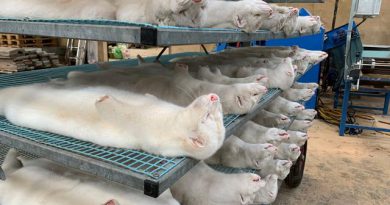From Cafes to Championships: Saudi Arabia’s Esports Revolution
Experts believe the site provides valuable clues about the role of the Arabian Peninsula as a crossroads of ancient civilizations.
Saudi Arabia’s Ministry of Culture has announced a groundbreaking archeological discovery near Tabuk, shedding light on one of the oldest architectural settlements in the Arabian Peninsula, dating back over 10,000 years.
The settlement, located at the Masiyon site in the Kingdom’s northwest, has been identified as belonging to the pre-pottery Neolithic period, estimated at 10,300–11,000 years ago. Officials described it as not only the oldest settlement in Saudi Arabia but also among the earliest examples of human habitation worldwide.
Dr. Ajab Al-Otaibi, director general of the Heritage Commission’s antiquities sector, called the find a milestone in understanding human history. “This discovery highlights the pivotal role of the Arabian Peninsula in the emergence of human civilization,” he said.
The archeological excavations were conducted by the Heritage Commission in partnership with Japan’s Kanazawa University and in collaboration with NEOM. The project builds on decades of earlier surveys, as the site was first listed in the National Antiquities Register in 1978. However, it was not until recent studies in December 2022 that experts confirmed its significance as the earliest known human settlement in the region.
Over four excavation seasons, completed in May 2024, teams applied advanced methods, including stratigraphic documentation, artifact classification, and organic sample analysis to determine absolute dating. Their work revealed semi-circular granite structures resembling residential dwellings, passageways, hearths, and storage facilities, pointing to an organized community layout.
Evidence suggests that the inhabitants practiced hunting alongside early forms of grain cultivation, reflecting humanity’s transition from nomadic lifestyles to settled agricultural societies.
The discoveries extend beyond architecture. Archeologists uncovered stone tools such as grinding stones, knives, and arrowheads, alongside ceramics, agricultural implements, and decorative objects. Human and animal skeletons were also recovered, offering insight into burial practices and daily life. Notably, engraved stones with geometric patterns further suggest an emerging cultural and artistic identity.
Experts believe the site provides valuable clues about the role of the Arabian Peninsula as a crossroads of ancient civilizations. The findings reinforce theories that northwest Arabia formed a natural extension of Mesopotamia, the Levant, and southern Anatolia—regions historically known as the Fertile Crescent. This suggests that the Arabian Peninsula was central to humanity’s earliest experiments with permanent settlement, agriculture, and community building.
Saudi authorities have emphasized that the discovery is not only of national importance but also part of the Kingdom’s broader contribution to global heritage research. By uncovering such sites, the Kingdom seeks to highlight its position as a cradle of civilization and a hub of cultural dialogue.
The Ministry of Culture said the excavations demonstrate Saudi Arabia’s commitment to preserving and documenting its archeological heritage while also opening new opportunities for cultural tourism. With projects such as NEOM nearby, officials hope that discoveries like Masiyon will draw international interest and further strengthen the Kingdom’s role in shaping global understanding of early human history.
As Dr. Al-Otaibi concluded: “The Masiyon site is not just a Saudi discovery—it is a chapter in the shared story of human civilization. It underscores that the Arabian Peninsula was not on the margins of history, but at its very heart.”


